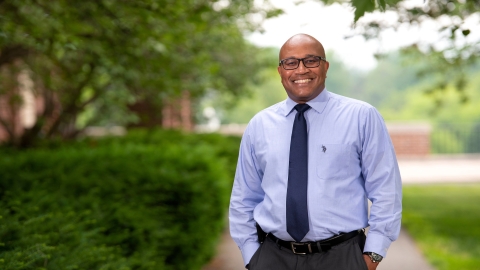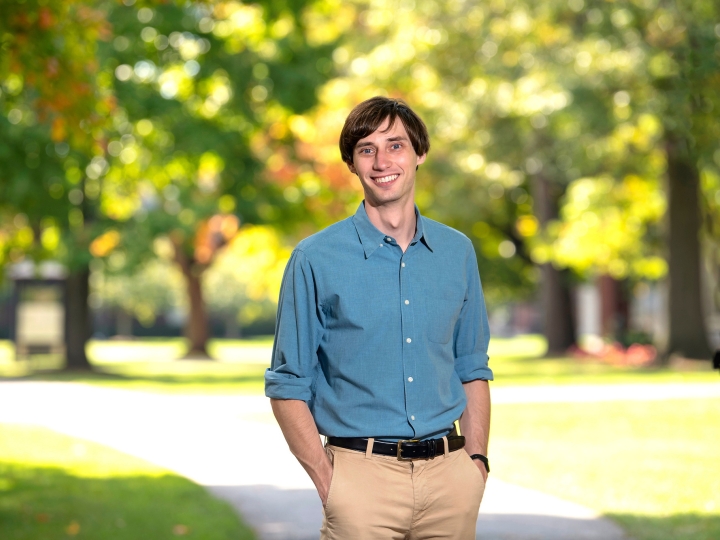
Hiram Smith, Spanish
July 2, 2021
For Professor Hiram Smith, Spanish, sociolinguistics and historical linguistics play a crucial role in navigating the historical effects of prejudice and discrimination. Photo by Emily Paine, Communications
Gaining a broader perspective on languages and dialects we’re unfamiliar with helps us contextualize what we’re hearing from those around us.
To open his course Language, Race and Discrimination, Professor Hiram Smith, Spanish, presents images of two Sesame Street regulars side-by-side: Elmo surrounded by chocolate chip cookies and Cookie Monster against a plain white background. After confirming they're familiar with the characters, Smith then asks his students, "Now, which one be eating cookies?"
"Almost always, students who are unfamiliar with the laws of African American vernacular will say that Elmo be eating cookies, when we all know that Cookie Monster is the one with the cookie habit," Smith says. "That's because they misinterpret the phrase 'be eating' as taking place in the current moment instead of happening frequently over time."
While seemingly small, this kind of misunderstanding has big implications for ethnic groups in the U.S., where dialects like African American English have developed over a complex history of prejudice and discrimination. For Smith, it's also a powerful example of the crucial role sociolinguistics and historical linguistics play in navigating the effects of that history today.
"When you start to look closely at languages and dialects and how they work — regardless of time, space or place — they're all equally systematic. It's just that some are socially stigmatized for reasons that have nothing to do with language but everything to do with the speakers," Smith explains.
Smith's curiosity about these historical and linguistic dynamics is rooted in his scholarly work on Palenquero, a Spanish-based Creole that evolved from cultural blending between fugitive African slaves and natives in Colombia. What he's found through a decade of detailed, in-person study of modern Palanquero speakers is that while variants of "standard" languages such as Spanish and English may diverge from their sources, they are just as rule-governed. In many cases, languages or speech patterns that develop through the blending of cultures entwine rules from two languages. For example, phrases like "he crazy" that omit the present verb "to be" mimic conventions found in Russian, Arabic and even Swahili.
"So it's not that these speakers are making an error. There's rhyme and reason to this grammar, it's just different from what we recognize in standardized American English," Smith says.
For those who use vernacular speech, it's a disconnect that can create obstacles everywhere from the classroom, where children may be unnecessarily placed in special education programs, to the courtroom, where misinterpretation can impact the outcome of a trial.
By studying the intricate histories and mechanics of various languages — from Spanish to African American English to Pennsylvania Dutch — Smith's students work to expand their understanding of the diverse people they encounter every day, and those they'll meet in the careers they pursue after Bucknell.
"The notion that one dialect or language is less correct than another holds no linguistic or scientific validity. Yet, when it comes to minoritized speakers, we've been miseducated by socially constructed ideas of what's 'correct,' " Smith says. "Gaining a broader perspective on languages and dialects we’re unfamiliar with helps us contextualize what we’re hearing from those around us."

